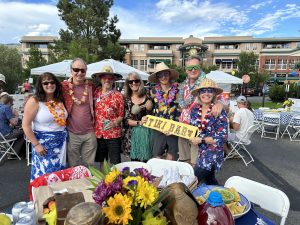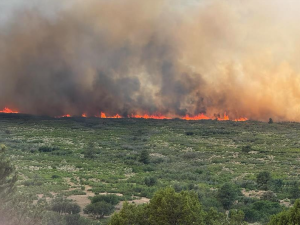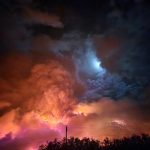Snowshoe of the Week: Where and how to identify winter animal tracks
Snowshoe of the Week
Tennessee Pass, between Minturn and Leadville, not only designates the separation of the Mosquito and Sawatch mountain ranges but it also parts the watersheds between the Colorado and Arkansas river valleys over the continental divide.
Adventuring in this area provides great opportunities to see giant subalpine fir and spruce trees with amazing views of Mount Elbert, the highest peak in the Rocky Mountains. While you may want to keep your eyes on the mountains, don’t forget to look down for signs of critters that may have been there before you.

Tracking in Winter
Many animals will not be found leaving tracks on our trails because they migrate to find warmer places with more food or hibernate all winter. However, there are many animals here in Colorado that are considered to be resistors or tolerators of the cold, and are active throughout the winter months, leaving their tracks for us to follow. Learning to identify these tracks out on the trail is the perfect opportunity to learn more about our local animals and gain an understanding of how they survive the winter months.
Commonly spotted tracks include the field mouse, the short-tailed weasel and the snowshoe hare. Mule deer and elk tracks are also fairly common to spot in the snow. Although they are not as common, there are many larger resistors that call Colorado home such as the bobcat, lynx, mountain lion, fox and coyote who come out to hunt for prey. The snowshoe hare has many special adaptations to help them survive in the cold and snow such as large feet to help better get away from predators in deep snow, and even molt their fur to all white to better camouflage in the winter.
With some practice, tracking can be quite easy and fun. Often, snow can obscure feet details which are very important when identifying tracks. Because of this, the first rule of snow tracking is to identify the track pattern created by the trail that is left in the snow.

Support Local Journalism
There are four basic groups of track patterns to learn: zig-zagger, bounders, waddlers and leapers/hoppers. Hares, such as the snowshoe hare, are leapers/hoppers and have bigger back legs than front legs. Their big feet help them to walk and run better on the snow, very much like snowshoes help humans walk easier in deeper snow. As they hop along their back feet will land before their front feet which will show you what direction they are moving. When running from predators they will bound in a zig-zag pattern which makes them very difficult to catch.
Any forested areas above 10,000 feet with subalpine fir and spruce are a great place to look for the snowshoe hare. In the winter, your chances of seeing one of these hares greatly increases at dawn or dusk when the weather is more mild.
Hike with us
Walking Mountains offers half day snowshoe hikes each Tuesday and Thursday throughout the winter. One of these programs is our Tracks, Signs & Snowshoe program, where we hit the trail to learn about all our local winter wildlife, and the tracks they leave in the snow. To see the schedule of Tracks, Signs & Snowshoes hikes and book your hike, visit walkingmountains.org/snowshoe.
Dominique Rosario is a Winter Naturalist at Walking Mountains Science Center. In her free time she loves searching for and identifying tracks on local trails.










